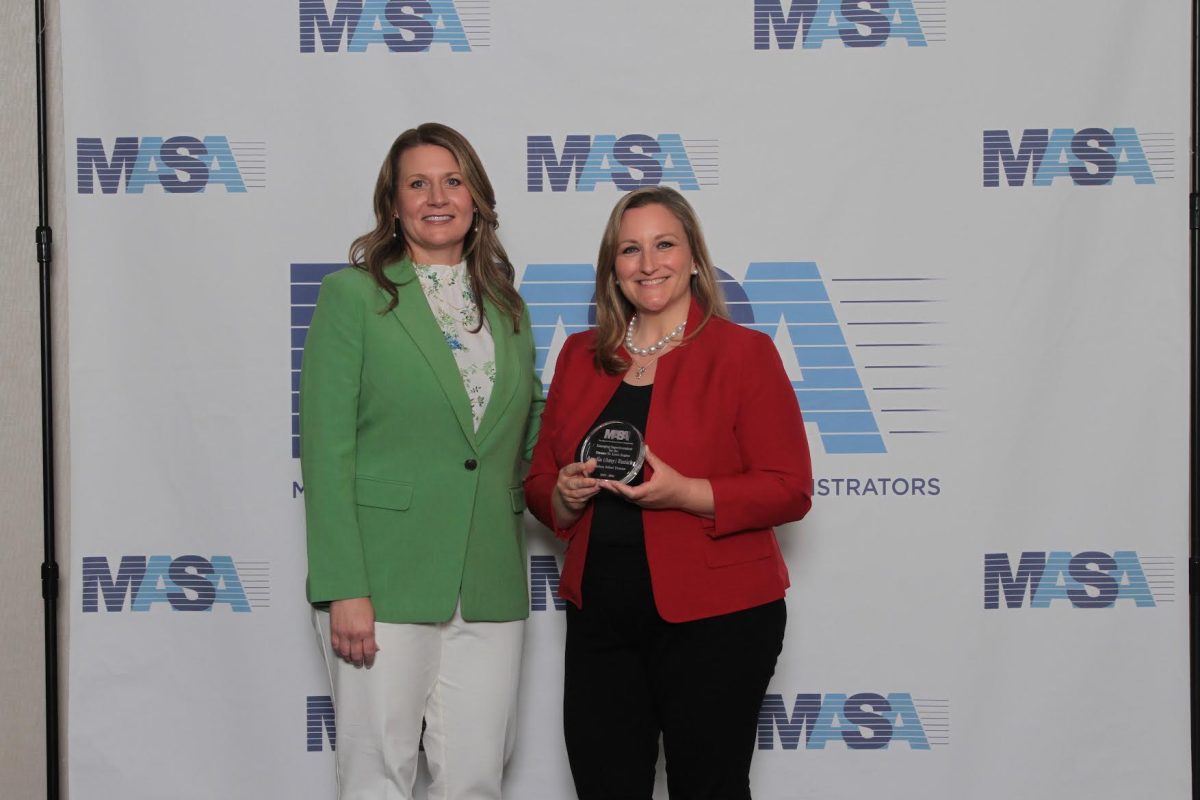By SCOTT MILLER
Staff Reporter
More and more Lindbergh High School students are walking down the graduation aisle and entering successful college careers.
In two years, the high school’s graduation rate improved more than 8 percent and of those who have left for college, most are staying to earn their degrees, according to information recently provided to the Board of Education.
“I was especially pleased with the number of youngsters that transition to college and stay in college,” Superintendent Jim Sand-fort told the Call last week. “A lot of time in high school is spent making sure the transition to college is successful. Lindbergh is becoming a college preparatory high school. College education is becoming vitally important as young people move ahead in life.”
In May, 442 graduates crossed the stage, while only 34 students dropped out over the four-year span of the class, a 92.9 percent graduation rate. Roughly 397 students earned a diploma in 2003, while 40 dropped out, a 90.8 percent graduation rate. And in 2002, 70 dropped out and 377 graduated, leaving an 84.3 percent graduation rate, more than 8 percent less than last year.
“We’ve always had a high graduation rate. Knowing that folks are there, knowing that programs are available, knowing that people care, helps boost an increasing number of students who may be on the edge get the credits needed to graduate on time,” Sandfort said.
The district also is tracking where students are going.
Nearly 86.4 percent of 2002 graduates, for example, attended either a four-year or two-year college and more than 2 percent attended other post-secondary education such as apprenticeships. About 6.4 percent jumped into the workforce.
Of the 2003 graduates, 86 percent went to college and 3 percent signed up for an apprenticeship or other form of post-secondary education. About 8 percent entered the work force. Figures for 2004 graduates are not yet available.
Once in college, surveys show Lindbergh students do quite well. Lindbergh officials do five-year follow-ups for every class.
The most recent follow-up for the class of 1998 shows 67 percent earning a bachelor’s degree, 14 percent earning an associate’s degree and 14 percent still working for a degree. While in college, 41 percent of 1998 grads tallied a grade point average higher than 3.5 on a 4-point scale and 39 percent notched a grade-point average between 3 and 3.5.
The district sends the surveys to all Lind-bergh graduates each year, asking them what they did after high school and what they are doing now, along with a number of other questions relating to their college career. About 25 percent responded from the 1998 class, but the yearly follow-ups from the classes of 2002, 2003 and 2004 had very high response rates, said Phyllis Burton, director of the Guidance Depart-ment.
“I’m not sure if that’s completely reflective of what they (1998 graduates) are do-ing, but I’ve been told that a 25 percent re-turn is actually pretty good,” she said.
By understanding where students are going — and what they may hope to do after high school — guidance counselors target student interest and offer enough information so graduates can make an educated choice.
Reviewing the surveys “doesn’t really mean we’ll do anything different,” Burton said. “It just helps us plan for how we’re going to help them make those plans. It’s trying to get them all the information they need to make the decision themselves … to know ‘this is the right decision for me.’
To help students prepare, Lindbergh hired a “college guidance counselor” specifically to help seniors with their transition from high school. The district also has instituted several preparatory programs such as ACT prep tests and tutoring programs that “provide increasing information as to what it takes to be successful,” Sandfort said.
And students have educational options outside Lindbergh walls to ensure more people graduate, he added.
The Lindbergh Academy, for example, allows more comfort for students “who don’t fit into a traditional high school setting.”
Suspended students no longer are left be-hind either with the “alternative to suspension school” for children who have gotten into trouble and normally could have missed course work, further hindering them from receiving a diploma.
“They’re still receiving an education. They’re still under the supervision of a certified teacher,” Sandfort said. “We’re saying: ‘Yes, you got yourself in trouble, but you can continue your academics and graduate on schedule.’ Our goal is to help them.”
With more options, more academic programs and a better guidance system, Sand-fort said, “You’re going to have high graduation rates for years to come.
“There are many, many support systems,” he added. “We have such an incredible support network and the credit goes to our teachers, families and the community.”



















